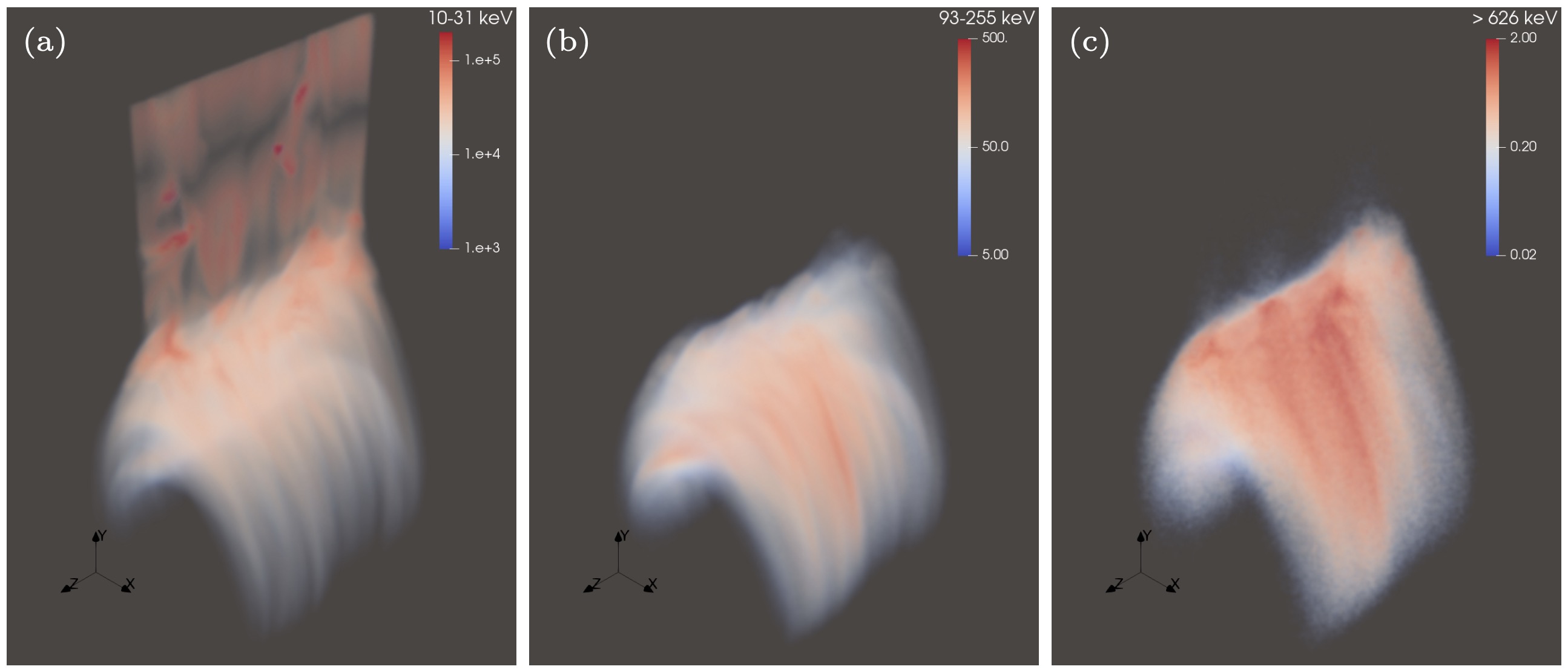Solar Flares
Multi-scale modeling that connects simulations and solar flare X-ray/radio observations.

Three-dimensional volume rending of the spatially dependent electron distributions (Li et al. 2025).
active
We integrate kinetic simulations, global MHD simulations, and energetic-particle transport solvers to explain how solar flares accelerate electrons/ions and how those populations light up hard X-ray and microwave observables.
What’s happening
- Integrated flare framework — Coupling reconnection-layer kinetics, termination shocks, and large-scale transport into a single pipeline that spans <1 m to >10^8 m.
- GPU-accelerated modeling — Leveraging GPU-accelerated energetic particle solvers to efficiently explore flare acceleration and transport.
- Synthetic observables — Generating hard X-ray and microwave emission maps directly from modeled electron distributions for comparison with RHESSI, EOVSA, and FOXSI.
- SEP handoff — Feeding flare-accelerated spectra into eruption-scale transport models used in the companion SEPs project.
Featured publications
- Energy conversion and electron acceleration in 3D flares
X. Li et al. — ApJ (2025) — read - Modeling Electron Acceleration and Transport in the Early Impulsive Phase (2017 Sep 10)
X. Li et al. — ApJ (2022) — read - Compression Acceleration of Protons and Heavier Ions
G. Murtas, X. Li, & F. Guo — ApJ (2024) — read
This effort ties directly into the Solar Energetic Particles project; reach out if you want to test diagnostics, add observational constraints, or explore joint modeling runs.